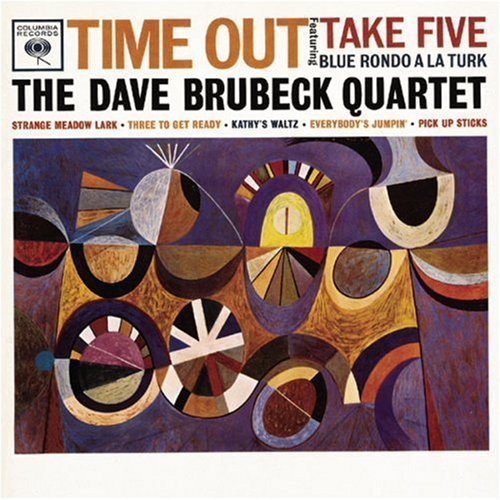Small Group Jazz Performances: Part I

This entry begins a series on small group performances in jazz history which are milestones for fans, and musicians. Many styles will be represented along with brief descriptions and personnel.
Jazz At the Philharmonic: How High The Moon (Clef/Norgran, 1947) Buck Clayton: trumpet, Flip Phillips, Coleman Hawkins :tenor saxophone, Willie Smith: alto saxophone, Trummy Young: trombone, Kenny Kersey: piano, Benny Fonville: bass, Buddy Rich: drums. Recorded Live March 5, 1947 at Syria Mosque, Pittsburgh, Pennsylvania.
Jazz at the Philharmonic, the brainchild of impresario Norman Granz is significant musically and culturally for several reasons. Musically, it brought together musicians from the traditional, swing and bebop eras to find common ground on blues and standard compositions; while also affording the opportunity for swing musicians interested in the language of bebop to dip their toes in those waters. Socially, it broke down the walls of segregation with black and white musicians together on the same stage, where Granz insisted each musician receive equal treatment. As you’ll hear, traditional jazz and swing era trombonist Trummy Young inserts a brief quote of Charlie Parker’s “Ornithology”, a contra fact based on the chord changes to “How High the Moon” in his solo. Contra facts, or compositions with new melodies written over existing chord changes, continue to be a popular practice today. This tune represents everything Jazz at the Philharmonic was about: presenting jazz in a concert hall setting, spirited improvisations working the crowd into a frenzy, and star musicians from various eras in the history of jazz. Norman Granz would revisit this concept on his Pablo label in the 1970’s with a roster featuring many artists he recorded on Verve, yielding a series of some very memorable jam session recordings made at the Montreux Jazz Festival in Switzerland, in 1975, and 1977.
Charlie Parker: Confirmation (Mercury, 1953) Charlie Parker: alto saxophone, Al Haig: piano, Percy Heath: bass, Max Roach: drums. Recorded July 30, 1953 Fulton Recording Studios, New York, NY.
)
Bird’s classic watershed tune. A quality that sets this apart from his classic Savoy and Dial recordings, is the use of magnetic tape (introduced around 1950). You can hear Bird’s invention and his interactions with the band clearer than ever, Parker’s alto almost sounds like a tenor at points here with a much darker hue, and he plays some magnificent ideas.
Dizzy Gillespie/ Charlie Parker Hot House (Guild, 1945): Dizzy Gillespie: trumpet, Charlie Parker: alto saxophone, Al Haig: piano, Curly Russell: bass, “Big” Sid Catlett: drums. Recorded May 11, 1945, unknown studio, New York, NY.
Another bop lamdmark, Parker and Gillespie are in amazing form. Dizzy’s range and groundbreaking ideas in his solo demonstrate why he is the most important trumpeter after Louis Armstrong. Sid Catlett along with Kenny Clarke and Max Roach on drums was an early bebop pioneer– he adapted his traditional and swing stylistic base to include the new time keeping innovations: a constant ride pulse, high hat on 2 and 4, with snare, tom, and kick drum improvisation interacting with the soloist.
Thelonious Monk: Straight No Chaser (Columbia, 1963) Thelonious Monk: piano, Charlie Rouse: tenor saxophone, Butch Warren: bass, Frankie Dunlop: drums. Recorded Live, July 21st, 1963 in Tokyo, Japan.
)
Monk’s typically idiosyncratic blues line in full bloom. He had signed to Columbia in 1962, and this period, after Monk’s breakthrough work on Blue Note, Riverside and Prestige is unfairly criticized by some in jazz circles for it’s recycling of favorite Monk tunes. The beauty of the Columbia recordings is the attention to subtle details and devices the pianist uses to flesh out his most loved compositions. Note his comping behind Rouse, many of Thelonious’ favorite devices pop up behind the saxophonist, but the assymetry and odd syncopations, bring something fresh to the table. Frankie Dunlop’s drum solo is a masterclass in developing a melodic solo without wasting anything– a quality which drummer Antonio Sanchez often mentions; the importance of building motifs in solos, and Dunlop’s choruses are exactly that.
Dave Brubeck Quartet: Take Five (Columbia, 1959) Dave Brubeck: piano, Paul Desmond: alto saxophone, Eugene Wright: bass, Joe Morello: drums. Recorded July 1, 1959 at Columbia 30th Street Studio, New York, NY.
The piece that demystified unusual time signatures for the general public. The Brubeck Quartet’s Time Out (first in a series of 5 unusual time themed recordings) was a pivotal album that made odd time and unusual forms accessible. Max Roach’s Jazz in 3/4 Time (Emarcy, 1957) was the first album to investigate something other than 4/4 for an entire album, but Brubeck’s album had a massive impact. Joe Morello’s drum solo is one of the greatest ever recorded, and the acoustics of the 30th Street Studio, a converted Greek Orthodox church make for a memorable recording that has been coveted by audiophiles for several generations. Brubeck’s use of traditional classical forms such as the rondo, included on “Blue Rondo Ala Turk”, (the 9/8 head contrasting with it’s funky, swinging 4/4 for solos) breaking ground for further investigation of extended forms beyond the traditional 12 bar blues and 32 bar AABA structures so popular in jazz at that time.
I have been the staff writer for the New York Jazz Workshop School of Music blog in midtown Manhattan since 2014, and that has broadened my freelance writing skills considerably. In addition to writing artist bios, and articles of interest that pertain to the mission of the school, I have interviewed (in print on the site) legendary guitarist and NEA Jazz Master Pat Metheny, trumpeter Cuong Vu, and in 2015 embarked on producing a podcast for the school where I have achieved my dream and interviewed jazz giants such as Dave Liebman, Lenny White, rising talents like Thana Alexa, Logan Richardson, guitarist and bassist Brian Kastan, among others. I also work on SEO optimization for the blog. In 2015 I started my blog Jazz Views with CJ Shearn, and have written liner notes for 5 time Grammy winner and Oscar and Golden Globe nominee, Antonio Sanchez (for his latest recording “Channels of Energy”) and guitarist Gene Ess for his latest recording, scheduled to be released in November 2018.
My passion for jazz music is what drives me, which is an interest I’ve had since I can remember. I initially began writing about jazz at the age of 13 for my high school newspaper, and in my late teens contributed occasionally to jazzreview.com. In college I was member of the Harpur Jazz Project which brought jazz acts to campus. I’ve also contributed in the past to AllAboutJazz where I was mentored by John Kelman. I decided to focus on my passion for jazz music journalism after a job in the social services field as a caseworker went south, and as a person with a physical disability I work on going against the odds, living independently and having accomplished things people had said I’d never do.
